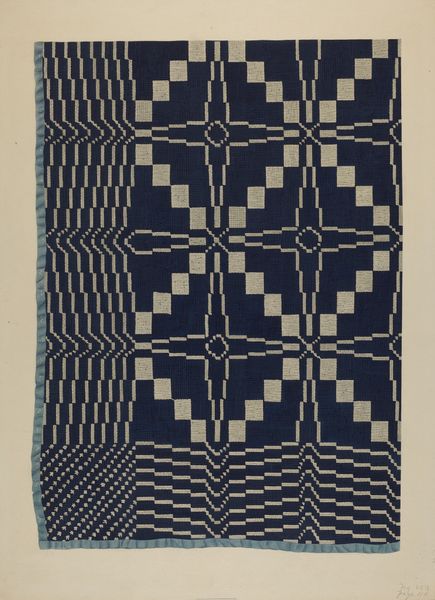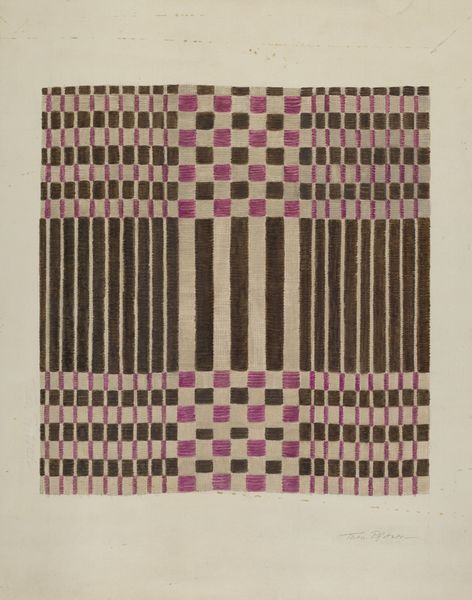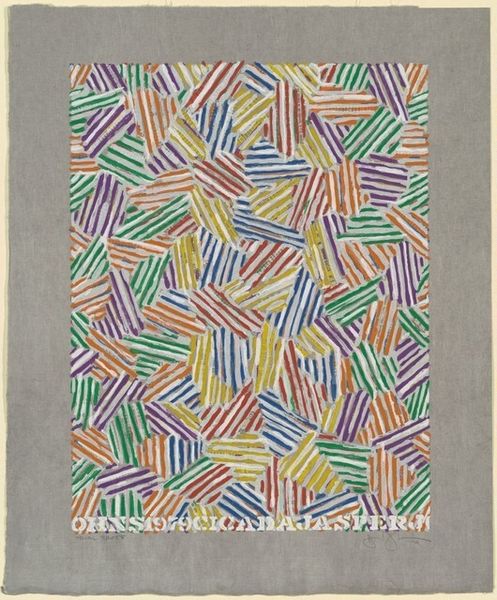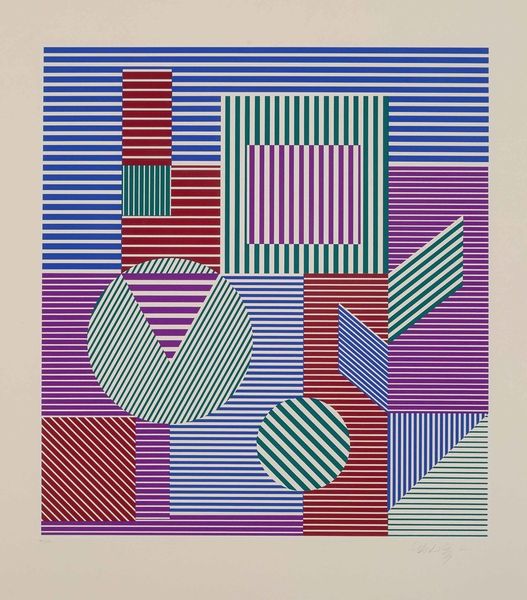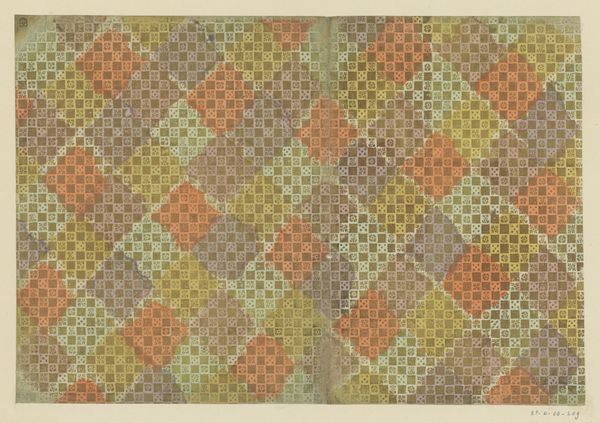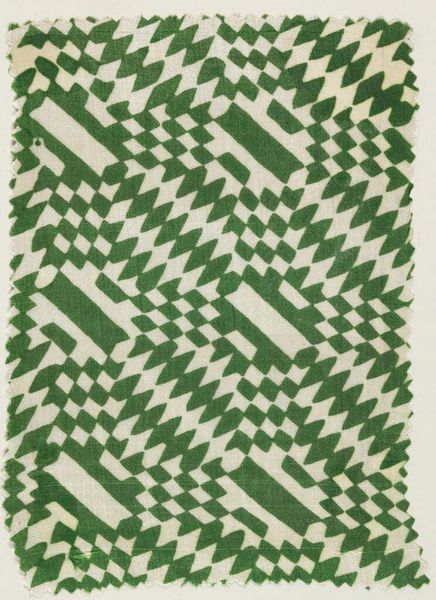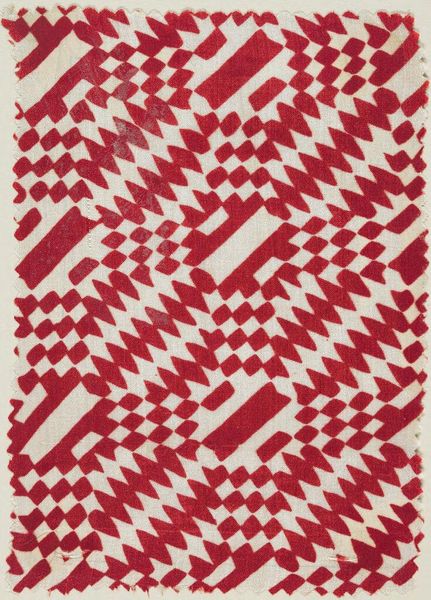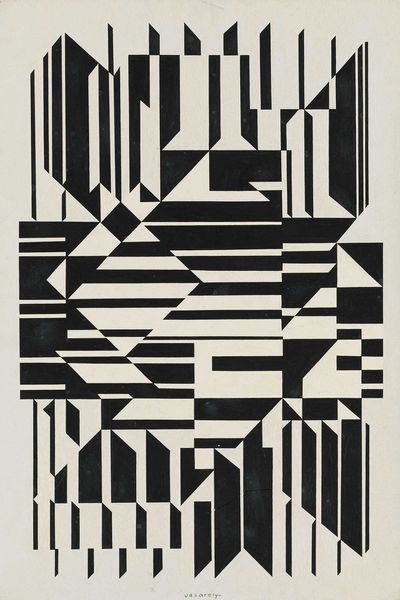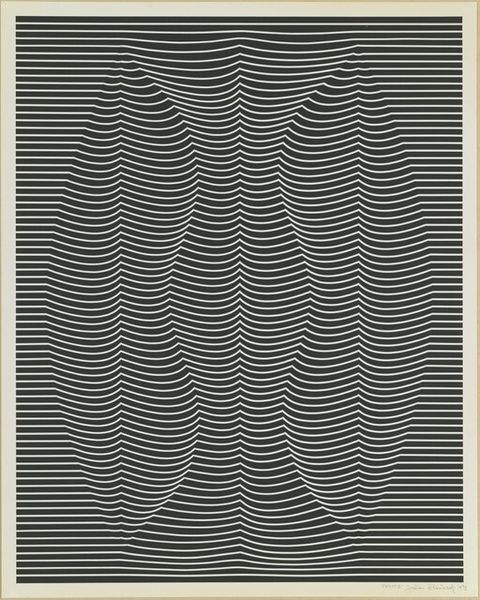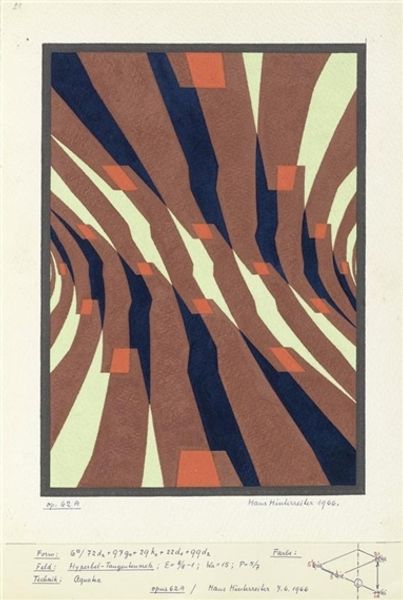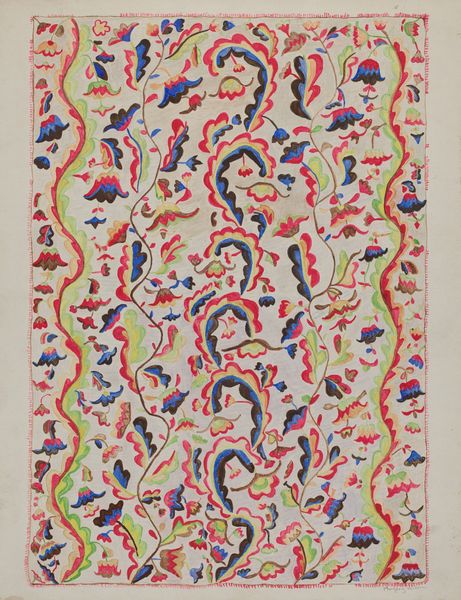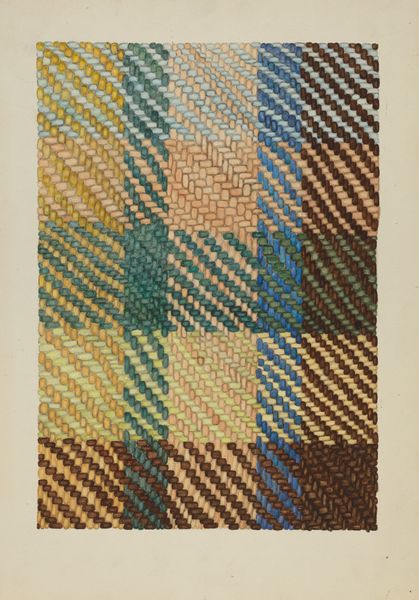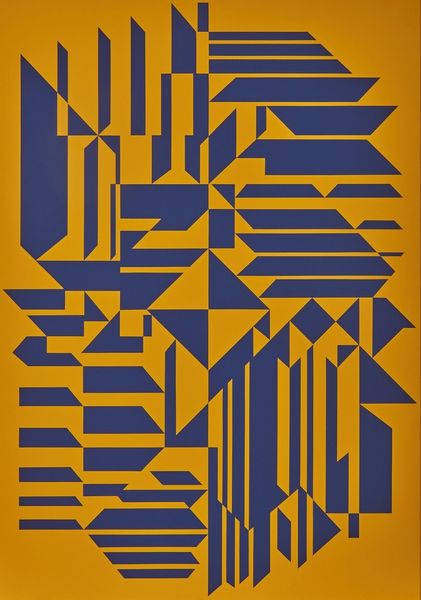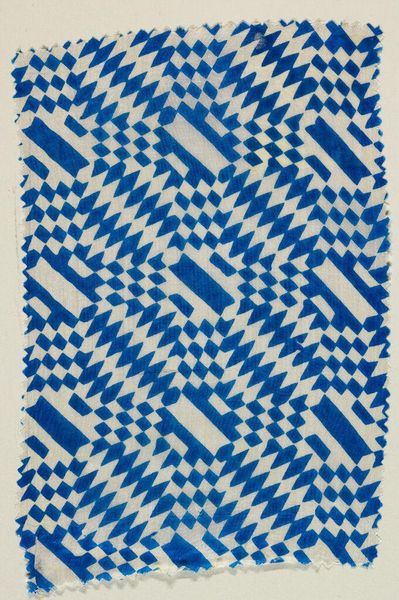
Dimensions: image: 787 x 530 mm
Copyright: © The Eduardo Paolozzi Foundation | CC-BY-NC-ND 4.0 DEED, Photo: Tate
Curator: Looking at Sir Eduardo Paolozzi’s screenprint, "The Spirit of the Snake," I feel drawn into a world of playful abstraction. The purple and gold undulations seem to suggest a landscape, almost dreamlike. Editor: What strikes me is how Paolozzi plays with the materiality of printmaking itself. The overlaid patterns, stripes, and polka dots create a tension between the flat surface and an illusion of depth. The choice of purple and gold, too, feels deliberate, alluding to both royalty and the psychedelic. Curator: Absolutely. There's a rhythm to it, a pulse. It reminds me of the way snakes move, hypnotic and seductive, full of promise and hidden dangers. It's like Paolozzi is teasing something out from the subconscious. Editor: And consider the labor involved in layering these screens, the precision required for each pass. It pushes against the traditional boundaries of "high art", celebrating the potential of mechanical reproduction. The subtle variations hint at human involvement. Curator: It leaves me with a sense of wonder, like glimpsing a secret language. Editor: For me, it's a clever reminder of how much meaning we can derive from the materials and processes that shape what we see.
Comments
tate 3 months ago
⋮
http://www.tate.org.uk/art/artworks/paolozzi-the-spirit-of-the-snake-p04764
Join the conversation
Join millions of artists and users on Artera today and experience the ultimate creative platform.
tate 3 months ago
⋮
The life and theories of the Austrian philosopher Ludwig Wittgenstein inspired this sequence of screenprints. Each print includes quotations from Wittgenstein''s own writings or passages from a biography. The collages of fragmented images relate to these texts. Paolozzi has described the prints as ''a kind of combined autobiography''. His Italian background led him to identify with Wittgenstein as ''a foreigner in England'', who shared an interest in engineering and a love of cinema. He has also drawn parallels between Wittgenstein''s theories of language and his own artistic practice. Gallery label, August 2004
